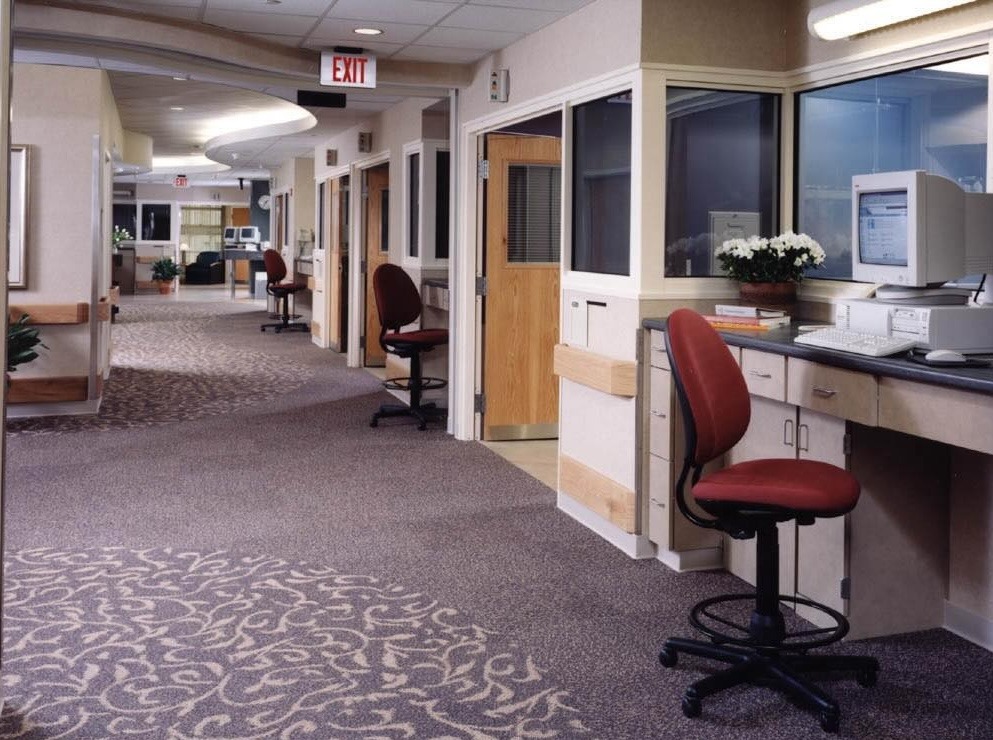Did you know that our indoor environments contain trillions of microbes like bacteria, fungi, and viruses? And that many of these microbes are essential to our health and can actually help with infection control?
It's also impossible to completely get rid of these microbes, because each person emits 30-40 million bacterial cells per hour. In hospitals, researchers have found that when patients are admitted to rooms, the prior patient's microbiome is still present -- even after rigorous cleaning.
The Myth of the Sterile Environment
But within an hour for two, the new patient colonizes the room with their own microbes. So there's really no such thing as a sterile environment.
I didn't know this -- did you?
It made me wonder if it's necessary to disinfect and sanitize our healthcare environments as much as we do. Or use as many antimicrobial surface materials, UV light technology, and high-powered air filtration systems as an infection control strategy.
Microbiology experts say maybe not. Instead, they suggest that building designers and owners/operators might want to start promoting "good" indoor microbes -- the ones that don't make people chronically ill or harbor deadly pathogens.
Think of it as a probiotic for buildings.
Impregnating Good Bacteria Into Surfaces
Some microbiologists, like Jack Gilbert, Ph.D., a professor and researcher at the University of California San Diego, think we should create bacteria "lawns" in the environment that will prevent bad microbes -- like the ones that transport the SARS-C0V-2 virus that causes Covid-19 from surviving. His research suggests that good bacteria can be impregnated into surface materials or used in polymer coatings.
Bacteria need water to live, though. So Gilbert and his colleagues are looking at adding bacteria to cleaning products.
However, on the first episode of the Alternative Design Podcast that I listened to this week, Gilbert said the evidence supporting the effectiveness of this method for cultivating good bacteria on surfaces is limited.
Other Ways to Promote Healthy Microbes
Another way to promote healthy microbes in buildings include is to use organic materials. In an article published by Bloomberg Businessweek last month, Luke Leung, Director of the Sustainable Engineering Studio of Skidmore Owings & Merrill, also suggests using ventilation systems that pump microbially diverse outdoor air into indoor environments.
Having operable windows to let in fresh air can accomplish the same thing. But this doesn't work in areas where there is high air pollution.
I guess you can also promote healthy microbes by killing the bad ones in the air. This includes using air filters designed to eliminate SARS-CoV-2 and other pathogens.
Or increase the humidity.
Research shows that virus particles in the air die more quickly when the relative humidity is higher. Droplets and aerosols won't stay in the air as long either.
What's Next
Someday we may have microbial sensors for air filters and surfaces that can be used to manipulate the microbiome in buildings. And there's lots of promising research underway that will help us better understand how this all works.
Until then those planning, designing, and operating healthcare facilities should educate themselves as much as they can on this issue and be open to trying new things when it comes to infection control.
Because doing it how you've always done it might not work as good anymore.
Want More?
Dig into these sources that I used to write this post:
Give the Buildings Yogurt, Alternative Design Podcast episode featuring Jack Gilbert, February 8, 2021. Produced by Kimball International and sponsored by Interwoven.
To Make a Building Healthier, Stop Sanitizing Everything, Bloomberg Businessweek, December 21, 2020.
The Role of Dry Winter Air in Spreading Covid-19, University Hospitals, December 20, 2020.
Microbiology of the Built Environment, peer-reviewed article by Jack Gilbert and Brent Stephens, Nature Reviews, August 20, 2018.
P.S. Please do me a favor -- if you liked this post and like this blog, please share it with others by sending them the link or posting it on your Twitter, LinkedIn, or Facebook. Also, don't forget to subscribe, so you'll get emails when new content is posted. Thanks!
Photo 7116413 © Irochka - Dreamstime.com







